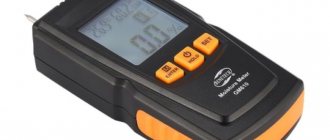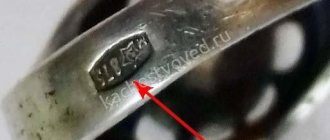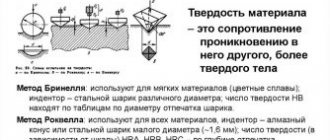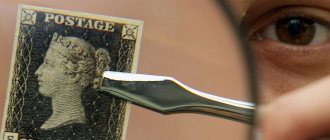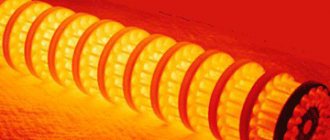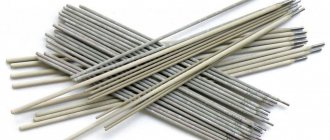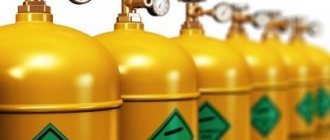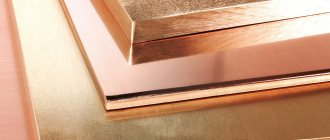Platinum is the most expensive precious metal that occurs in nature ten times less often than gold, which is why it is nicknamed the “queen of metals.” Platinum has a high density, incredible wear resistance and resistance to corrosion. Metal also has a magnificent appearance, so the jewelry will not leave anyone indifferent. In addition, platinum products do not break, bend or tarnish over time. Many people who are interested in jewelry made from this metal are wondering how to determine platinum at home.
Natural platinum bar
How to choose the right platinum
Platinum today is an expensive precious metal that is widely used in jewelry. It has external similarities with white gold and silver. Silver can often be passed off as platinum. Especially if you buy metal secondhand. It is advisable to make such purchases in trusted jewelry stores. But you shouldn’t let your guard down there either. It is almost impossible to visually distinguish platinum from a fake, but there are some nuances that you should definitely pay attention to.
Due to the high cost of metal, jewelry made from it is rarely massive. Most likely, these are neat, miniature products. Also pay attention to the ability to heat up. Try warming the jewelry in your palms for a few minutes. If it does not take your body temperature, then you are dealing with the original.
Be sure to look at the presence of the sample (850, 900, 950, 999) and at the data indicated on the tag or in the so-called product passport. Under no circumstances agree to purchase jewelry without these attributes.
Checking jewelry
You should check the authenticity of the metal in the store. Of course, platinum cannot be determined by eye, but there are still nuances that will help avoid counterfeiting. The main rule is to buy products in jewelry stores and salons who fear for their reputation.
In such places, sellers are not interested in selling counterfeit goods. Therefore, each ring or pendant undergoes a thorough check, during which the red limit for platinum is determined. Such a laboratory test instantly shows the authenticity of the metal. But, alas, it is impossible to repeat it at home.
When purchasing products, pay attention to their size. Platinum jewelry is almost never massive. This is due to the high price and rarity of the metal. Therefore, if you are offered large earrings or a bracelet, you should be wary - this is a fake.
Another way to determine the authenticity of platinum in a store is to hold the product in your hands for half a minute. If the metal remains cold upon touching the body, it means that this is real jewelry.
How to check the authenticity of platinum at home
Platinum has a pure white luster that is unlike any other metal. Silver of even the highest standard will have a grayish tint.
Do you think it is necessary to distinguish platinum yourself? Here are several ways to test platinum.
Ammonia or ammonia
Ammonia is easy to obtain at any pharmacy. Ammonia will not react with metal, unlike others that leave dark stains. If no reaction occurs, you are the happy owner of a real jewel.
Iodine
Contact with iodine will cause a dark spot to appear on the platinum. It can be easily removed immediately after the experiment. The darker the color of the spot, the higher the grade of the metal.
Salt
Salt will also come to the rescue if you need to check the authenticity of the jewelry. This experiment will require a little work. You will need:
- can;
- batteries;
- salt and water solution.
Pour the solution into a jar and place the decoration in it. The plus batteries must be connected to the product, and the minus batteries must be connected to the jar. If sediment forms and the liquid becomes cloudy, you are dealing with a fake. If the water remains clear, everything is fine. If you smell chlorine, don't be alarmed. This is the result of the reaction. You have the original in your hands.
Magnet
This method is the least effective, but also has a right to life. Like other noble metals, platinum is not attracted to magnets. This will protect you from crude counterfeiting, but it will not be possible to distinguish silver from platinum in this way.
Home methods for determining the authenticity of platinum
We will always have time to contact specialists, let’s first try to figure it out on our own, and then you’ll see that you won’t need help.
How to determine weight and density
The density of platinum jewelry depends on the sample, the highest is 999. The metal has a specific density of 21.45 g/cm3, and in 950 sample it is 21.05 g/cm3. In jewelry, 850–950 platinum is used, where the precious fraction content is 85–95%, respectively. Mostly 950 is found, less often 900, very rarely 850. 999 is used only in bank bullion. The sample number is always indicated on the inside of the product.
Expert opinion
Vsevolod Kozlovsky
6 years in jewelry making. Knows everything about samples and can identify a fake in 12 seconds
Weigh the platinum product with a pharmacy or special electronic scales. You can determine the density like this: lower the weighed decoration into a measuring container filled with water. We obtain the volume of displaced liquid in cubic centimeters. It is best to collect it with a syringe. We divide this value by the weight in grams. If it turns out to be approximately 21.05—density 950—that means it’s not a fake.
Fraudsters do not use other dense metals; they are too expensive and rare for that. Therefore, we can be sure that a metal with such a density is what we need.
Alcohol solution of iodine
This product is in every home medicine cabinet. It is applied to the metal surface: the iodine should remain dark. It’s easy to determine: the darker the drop, the higher the sample. Don’t forget to wipe off the iodine; there will be no streaks on real jewelry.
Aqua regia
A chemical solution called aqua regia is made from 1 part nitric acid and 3 parts hydrochloric acid. It has a unique ability to oxidize metals: any metals dissolve in it, but not platinum.
Liquid ammonia
This is a simple and easy way to check. It is based on the fact that liquid ammonia, when in contact with metals, leaves dark marks on them. Platinum is an exception: ammonia has no effect on it.
Concentrated salt solution
In a metal jar, make a concentrated solution of ordinary table salt. Place the decoration you are researching into it. Take the battery. Connect the object under study to the plus, and the can body to the minus. If the solution becomes cloudy and a precipitate has formed, then it is a fake. If the solution remains clear and chlorine is released, which you can identify by the familiar smell, then it is platinum.
Magnet
Platinum, like any other noble metal, does not have magnetic properties. Therefore, check whether the jewelry you are testing is magnetic or not. This method cannot be used to distinguish it from silver; it also does not react to a magnet, but in principle it will help to identify a fake.
How to distinguish platinum from other metals
From silver
The most common item given out under the guise of an expensive metal is silver. Here are a few criteria to consider when choosing platinum jewelry that will help determine the authenticity of the platinum.
- Hue. The original will always be lighter and whiter than silver. If your platinum jewelry has darkened over time, it is most likely sterling silver.
- Silver is much lighter. Their weight varies significantly. Jewelry of the same size will always weigh differently.
- Density. This indicator for white metal is one of the highest among others, so it is not susceptible to almost any mechanical influence.
- Temperature resistance. Platinum is much more resistant to high temperatures. For example, if you bring it to an open fire, nothing will happen to it. Silver heats up very quickly and takes on ambient temperature. This can be checked by even holding the product under hot water for several minutes.
How to distinguish platinum from white gold
Less often, white gold is given out under the guise of an expensive metal. An important difference, which unfortunately cannot be checked when purchasing, is that white gold is an alloy of several metals. As a rule, these are nickel, palladium, silver and yellow gold itself.
In the case of white gold, one of the elements added to it can cause allergies. Platinum, unlike white gold, does not cause allergies.
Again, don't forget to make sure you have a sample. The fineness values for platinum and white gold are different. For gold it is 500, 585, 750, and for white metal it is 850, 900, 950.
Gold is easily subject to mechanical stress. It is easy to scratch or leave marks on it. Platinum has a very high density, so this shouldn’t happen to it.
The weight, as in the case of silver, is very different. Platinum is much heavier.
White gold, although it has this name, still has different shades. This occurs due to the presence of certain elements in the alloy. Platinum jewelry always has a noble white tint. The only shade very similar to precious metal is the rhodium plating. It shines beautifully and also has a white undertone, which makes it almost impossible to visually distinguish it from its more expensive relative. However, over time, this coating begins to wear off and needs to be renewed.
The difference is also in cost. Products made from premium metal will never cost less than white gold.
From stainless steel
Stainless steel is very difficult to distinguish. In the question of how to determine platinum, methods that work for other metals will not help. Pay attention to the price. Steel will cost much less. There will be no markings on steel, while platinum jewelry will always have one.
Otherwise, it is possible to distinguish stainless steel from platinum only in the laboratory by taking physical measurements.
We evaluate the quality of the product
Inspect the decoration carefully. It must contain markings that indicate the authenticity of the metal. In addition, products with platinum are hallmarked. This material has the following values:
- 850.
- 900.
- 950.
- 999.
If the marking with the sample is not clearly stamped or other numbers are indicated, then refuse to purchase. This is 100% fake.
Another way to determine platinum when purchasing is to examine the product itself. Since such jewelry is expensive, there are no defects or flaws in them, because only professional jewelers work with platinum. Therefore, “hack work” should alert you.
Don't forget to look closely at the shine of the metal. The noble material is characterized by a pure white shine. Silver, even high-grade silver, has a gray tint. This is noticeable when comparing the two decorations.
Platinum as a catalyst
This expensive metal, in addition to jewelry, has a very wide range of applications in other areas. For example, in technical applications it is used as a catalyst. It produces nitric acid. Platinum catalysts accelerate many chemical reactions, which is why it is also used in the production of sulfuric acid. In 1821, a chemist from Germany discovered the property of platinum catalysts to accelerate the process of converting wine alcohol into wine vinegar without exposure to high temperatures. At the same time, he noted that nothing happens to the metal itself. He also found out that a mixture of oxygen and hydrogen, when interacting with platinum black or platinum sponge, causes combustion. And due to the active release of heat, an explosion occurs. Thus, he invented a means of making fire before matches were invented.
The world's first platinum catalyst was produced in the 60s of the last century. It was a dehydrogenation catalyst.
Platinum is also used as a catalyst in other industries. This:
- Oil refining industry, where it is also used as a catalyst;
- Electrical engineering sector of production. It is used for the production of various sensors, electrical appliances, contacts, devices where high precision is required;
- Automotive industry. In this case, platinum is used as a catalyst;
- Space industry. Electrodes of fuel cells in spacecraft are manufactured
- Medicine. All surgical interventions are performed with platinum instruments; metal is also used in dentistry, cardiology, and for the manufacture of prosthetic parts
- Glass. Metal is used to produce high-quality optical devices. They also produce fiberglass and equipment for the production of premium quality glass.
- Chemical instruments.
How to extract platinum from a catalyst
Many resourceful people, knowing about the great value of the metal, know how to extract platinum from a catalyst and use it. Most often, platinum catalyst can be found in the automotive industry. It is from such a catalyst that the precious metal is most often extracted. An auto component filled with ceramics or metal looks like a honeycomb, and its upper part is coated with precious metal. It could be platinum, rhodium or palladium. This is necessary in order to reduce the level of toxic substances released during vehicle operation.
Resourceful people, knowing about this deposition, use auto catalysts to extract the noble metal. To extract tolls, two methods are used:
- leaching;
- "aqua regia"
The leaching method is most often used. To carry it out you will need nitric and hydrochloric acids. Due to the fact that the auto catalyst is made of ceramic or aluminum, this complicates the leaching process, since the ceramic or metal reacts with acids and oxidizes. This results in the loss of some platinum. Therefore, this method requires several catalysts.
First, the catalyst is soaked in a solution of hydrochloric acid. Then it is heated and, when vapor appears, oxidizing agents are applied.
Now for some good stuff
If you are purchasing platinum jewelry, go to a reputable jeweler or store. Today, finding stores with gold, silver and platinum is not a problem. But even if they have an alarm system, security, counters with jewelry, they can also be fake. And it’s not a fact that the store’s employees will know about it. That is why we repeat again and again - go buy jewelry in a large store that has already made a name for itself and has earned a positive reputation. You don't have to check whether it's platinum or not.
If you want to know what metal your jewelry is made of, go to a specialist. They will tell you the truth, provided that you do not choose the cheap option of examination in a subway crossing, where you can easily be deceived. Any large store will help you and determine whether it is platinum or another metal.
It is also worth contacting serious stores for security reasons, since they do not pass on information to third parties and will not deceive you.
